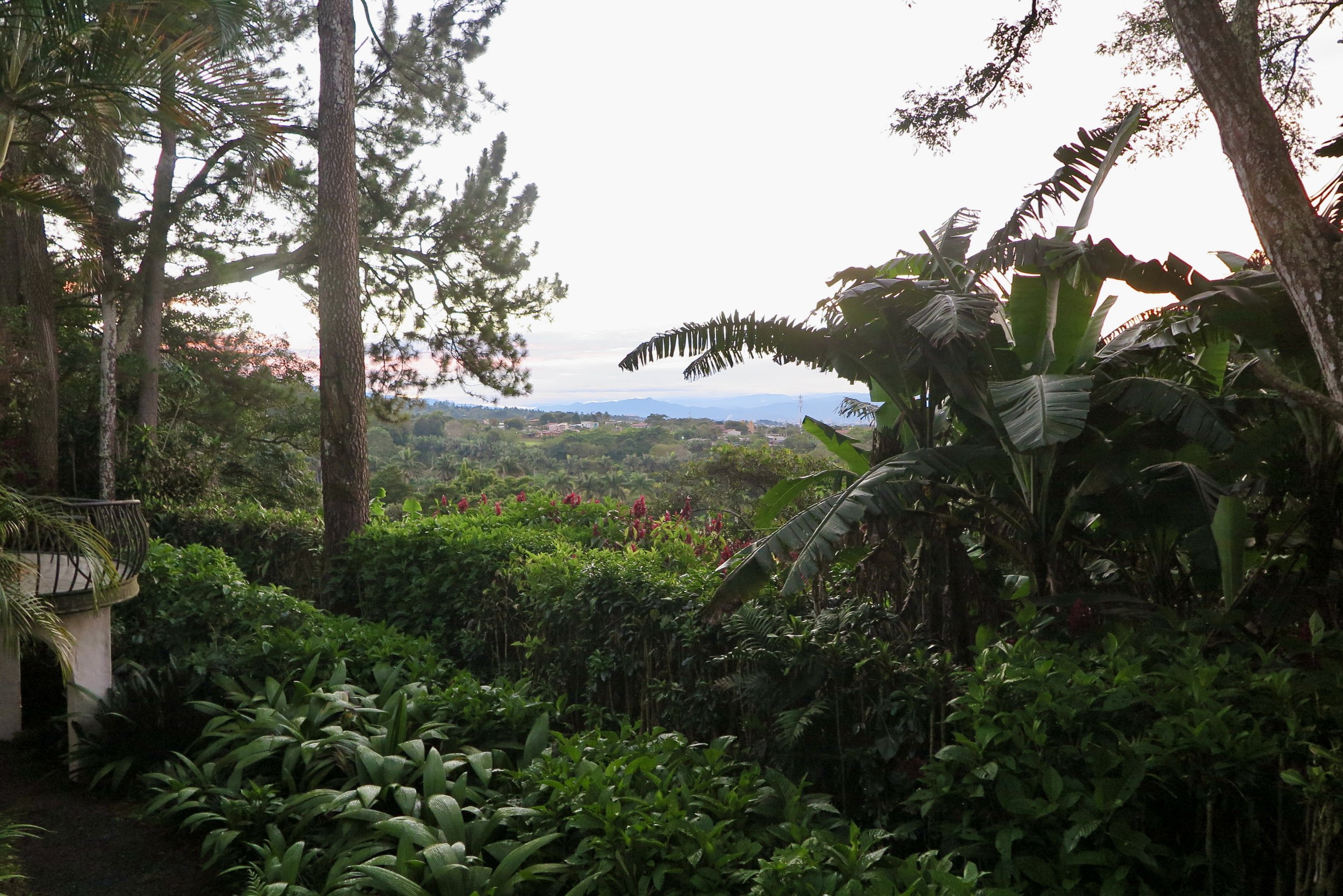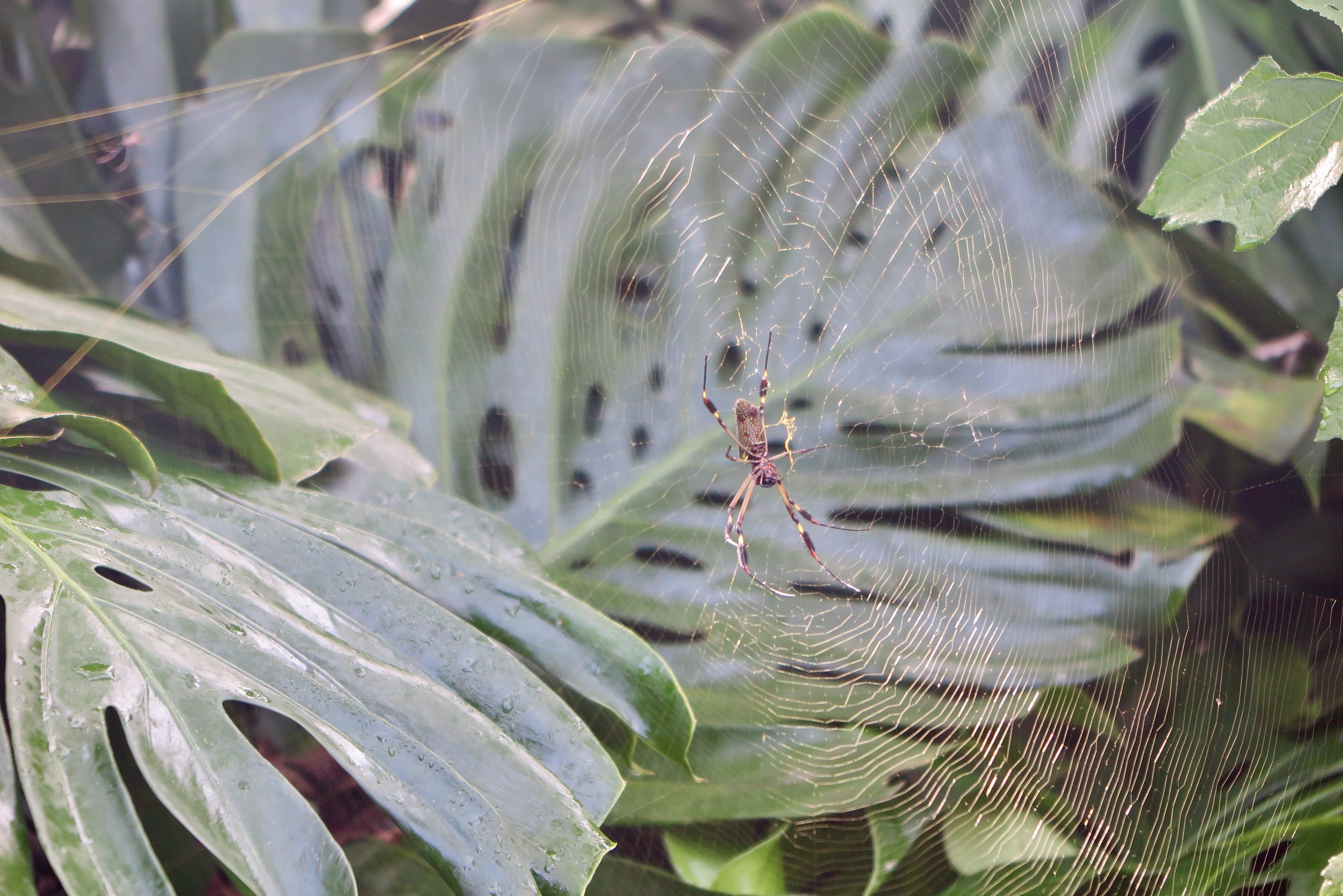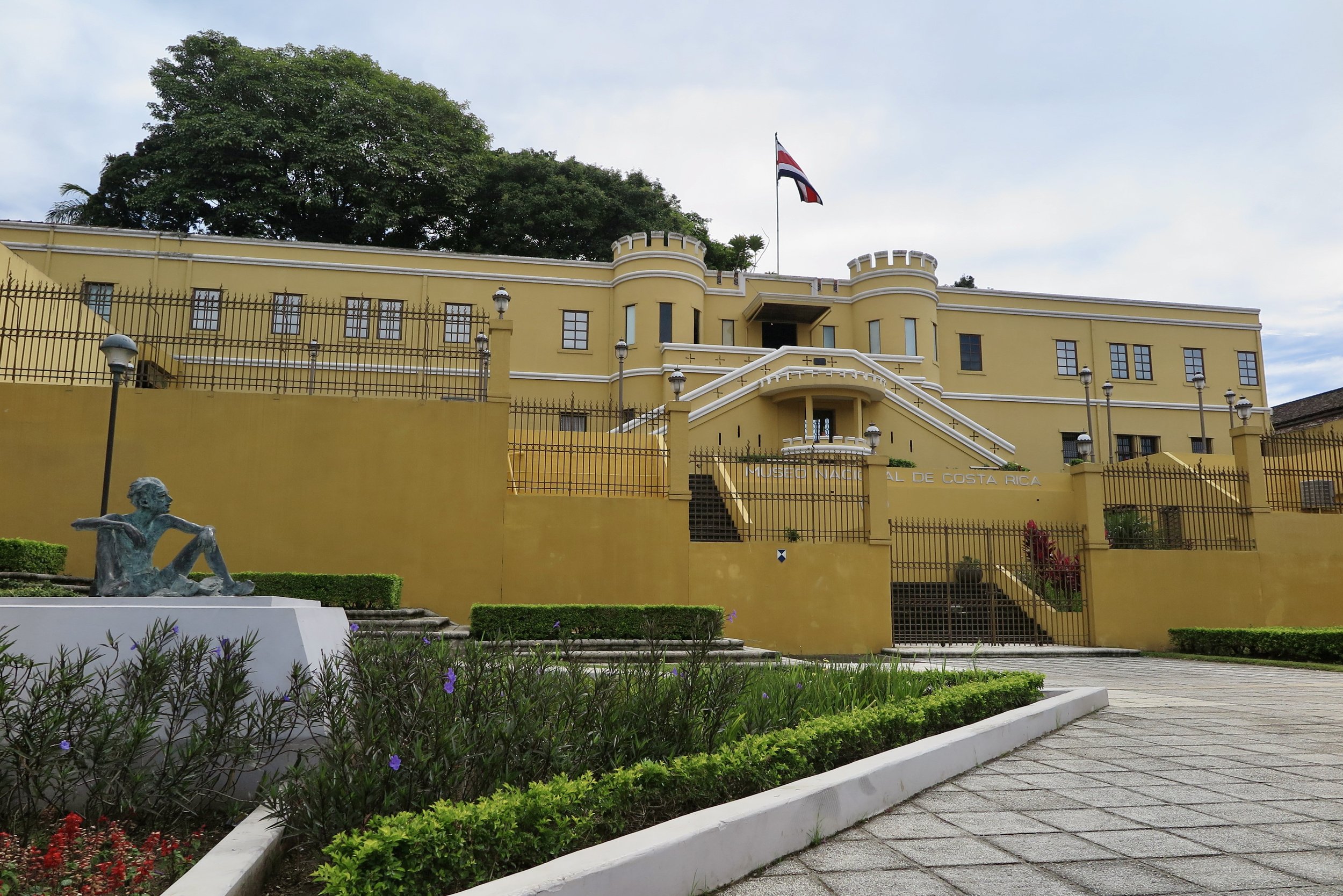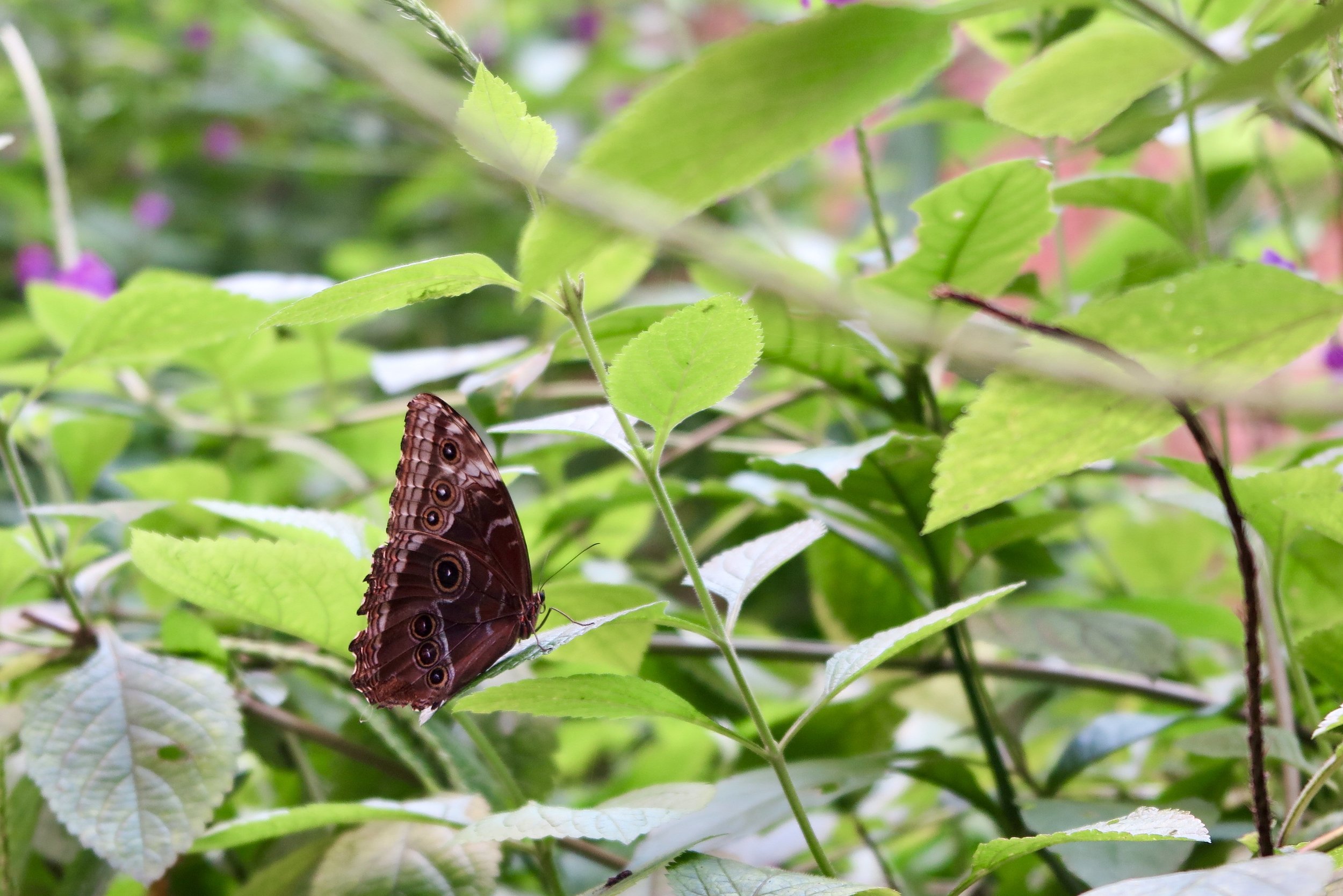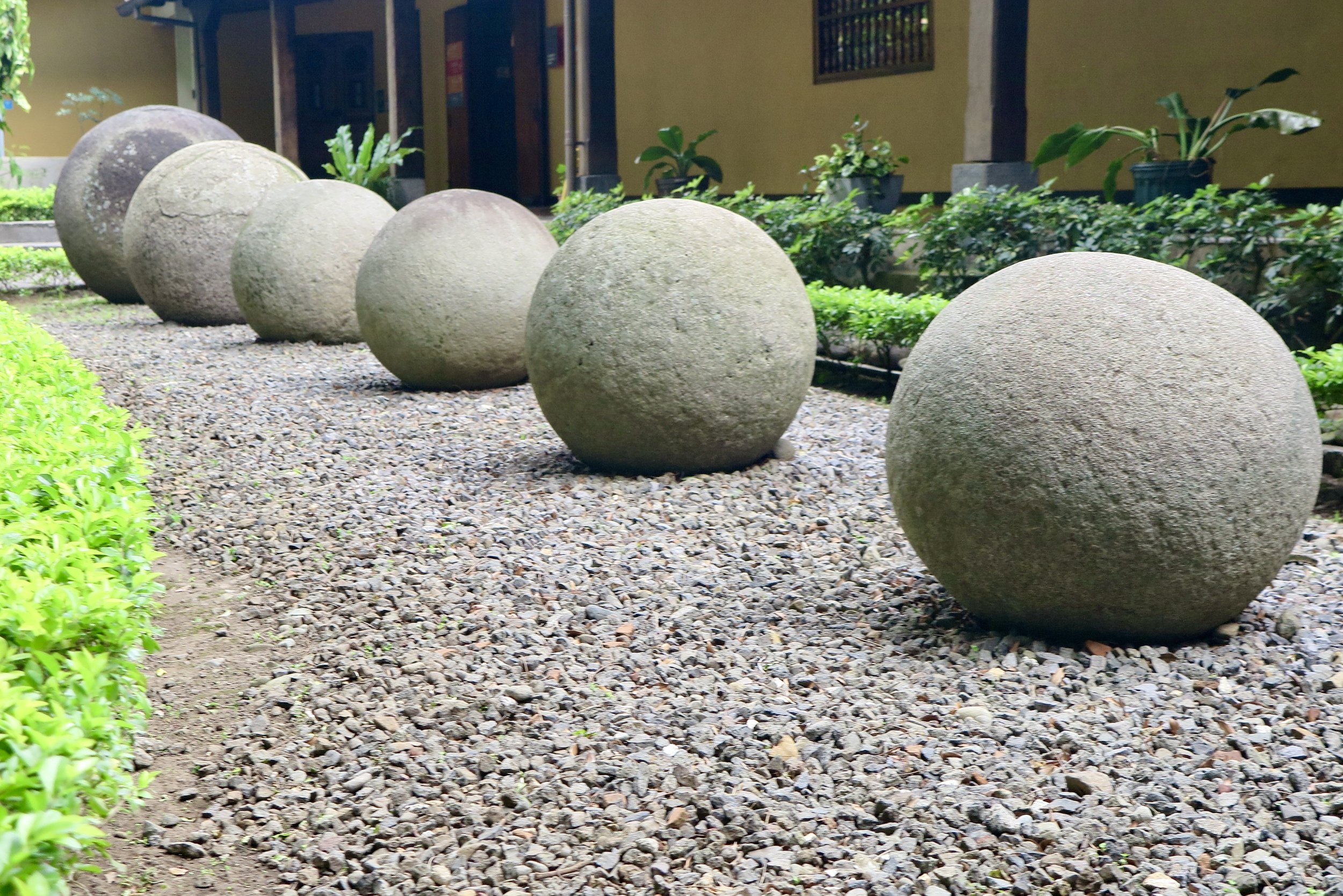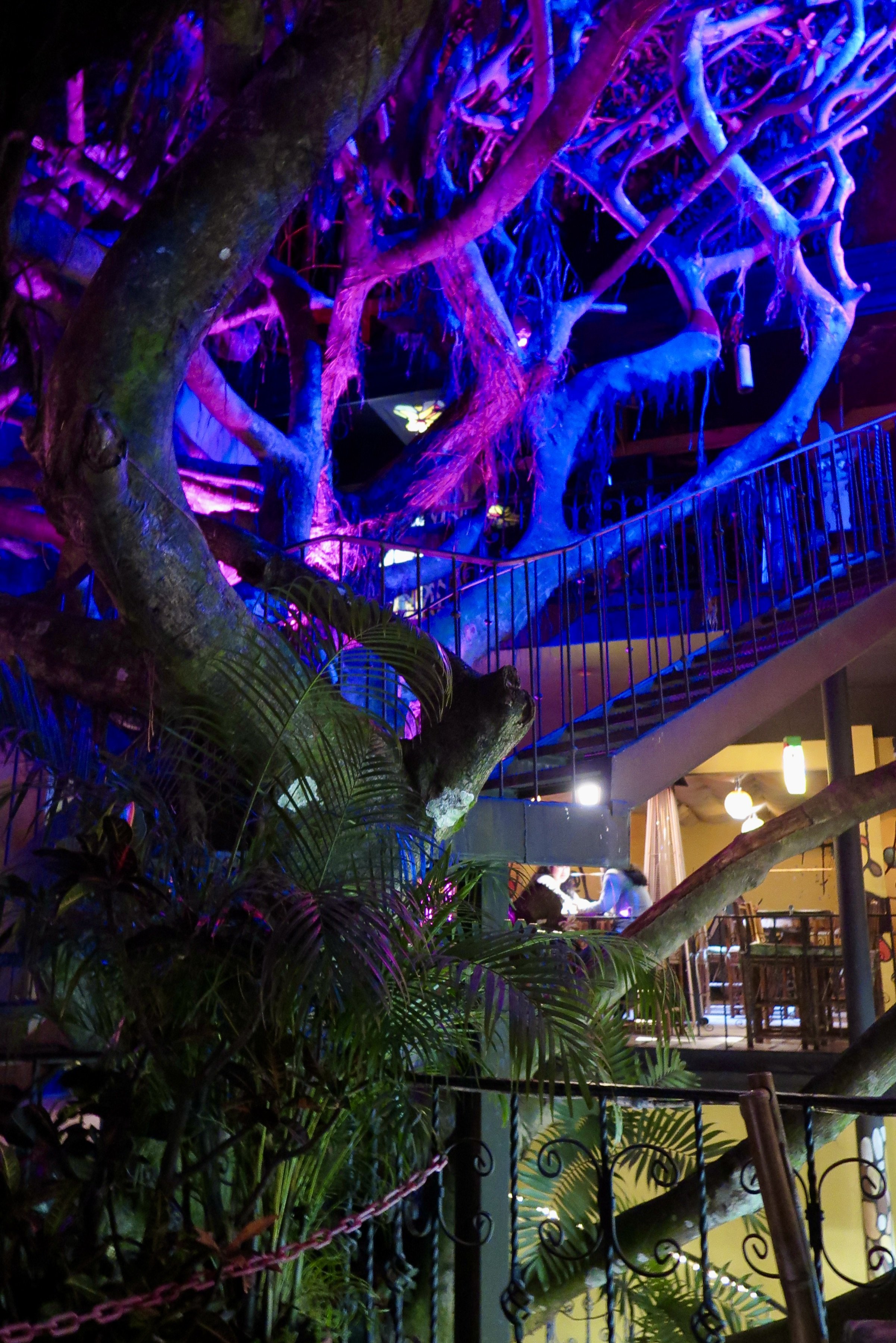Okay, not exactly because we spent this afternoon travelling but today was our day in the Costa Rican capital, San Jose.
We were up early and breakfasted in the hotel (traditional Gallo Pinto for Kevin and Costa Rican pancakes for me, which really were just normal pancakes - I feel swindled…) with some very good coffee before Julio and Sarah Joy picked us up and drove us into San Jose. I wish we had a little longer at this hotel, it was such a beautiful, peaceful spot. We do end our trip back here so maybe we’ll have time to enjoy it more. On the drive into the city, Sarah Joy told us about these enormous spiders we saw in the plants at the hotel - golden orb spiders. Not poisonous but their webs did inspire kevlar, so that’s pretty cool. We also learned about the devastation that the pineapple industry is wreaking on the country. Basically, only perfect pineapples get exported - and Costa Rica makes up a HUGE portion of the global pineapple market. The large growers don’t own their fields, they rent them. And they destroy the soil and the local water supply in pursuit of perfect pineapples with pesticides. Then, after 2 or 3 years, when the soil can’t grow anything anymore, they leave and move on to somewhere new. It’s pretty damn bad and we’re probably not going to be eating much pineapple anymore. At the very least, we’ll be switching to organic.
Soon, we arrived at the Museo Nacional de Costa Rica, which has a focus on the country’s pre-Columbian history but also overviews more modern history, too. Before we made it inside the museum, we learned about the monstrosity that is the new legislative building. It’s this big, ugly cement building with no character. It is quite environmentally friendly, which is good, but the general consensus is that the citizens hate it. And when you see the previous building, which is now all offices, it’s easy to understand. The building was selected through a contest and no one can quite figure out how it won, as Julio told us there were several really beautiful designs that were also very environmentally friendly. As a country, Costa Rica is at the forefront of sustainable energy production. Around 99% of their energy is produced with renewable resources, like hydroelectricity, windmills, and geothermal sources. So it makes sense that they wanted something that supported their commitment to the environment but it sounds like there were more attractive options.
Anyway. We also learned a bit about José Figueres Ferrer, the president who abolished the army in 1948 after a civil war.. Because they don’t spend money on a military, they have lots of money for education and environmental causes, which explains the investment in renewable energy! We also saw some of the famous spheres, which once you see them, they are everywhere! Not all are the actual spheres but spheres are now a part of the visual identity of Costa Rica. The spheres in question are pre-Columbian and made of different types of stone and while it’s unknown exactly what they were for, how they were moved, etc, they have been found all over the country. Many were destroyed because Europeans assumed the indigenous populations were hiding gold in them or other treasure. Many were also held privately but it’s now illegal to own any. We saw several outside of the museum and then many inside, as well.
The museum, itself, is housed in old military barracks and has a butterfly garden at the entrance. It was a bit early for the butterflies to really be out yet but we did see some feeding already and caught side of a few beautiful blue butterflies flitting about. Then, it was into the pre-Columbian section of the museum where we saw lots of spheres and other artifacts, including small tables that would have likely been used for crushing corn or grains. Some were decorative but others were used regularly. We also saw lots of interesting animal sculptures, hopefully as a precursor to seeing some of these animals in person as we travel throughout the country.
Then, it was onto the Museo del Jade, which was very interesting and where we learned that Costa Rica was a bit of a global meeting place early on where people would come from all over and trade their goods. So, jade was often something that was traded and explains why there is so much in Costa Rica. The museum has so many beautiful examples of jade used for religious, medicinal, and artistic purposes along with a lot of gold and other historical items. The collection is vast and so much of it is on display that it’s a lot to take in. Preserving the heritage of the jade is incredibly important and It’s now illegal to purchase it. If you bring jade into the country, you have to prove it’s not from Costa Rica or else it will be confiscated.
Then, we wandered up towards the National Theatre, which unfortunately was closed due a private event so we did an early lunch with Julio and Sarah Joy before meeting our driver, Oscar, who will be shepherding us around while we’re here. The roads can be difficult to navigate when you get out of the city and it isn’t unusual for roads to close during the rainy season or for a 30km drive to take hours so it’s good to have someone who knows what they are doing. Oscar took us up to Santa Elena, where we are spending the next two nights at Senda Hotel, another hotel known for its sustainable practices, where we were greeted with a welcome drink and escorted to our sweet little cabin. Once settled in, we walked into town to find some dinner and landed in a restaurant in a tree. Just a tree growing right up in the middle of the place. With lights on it that change colour. It was both ridiculous and wonderful.
